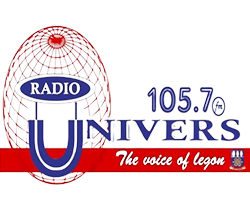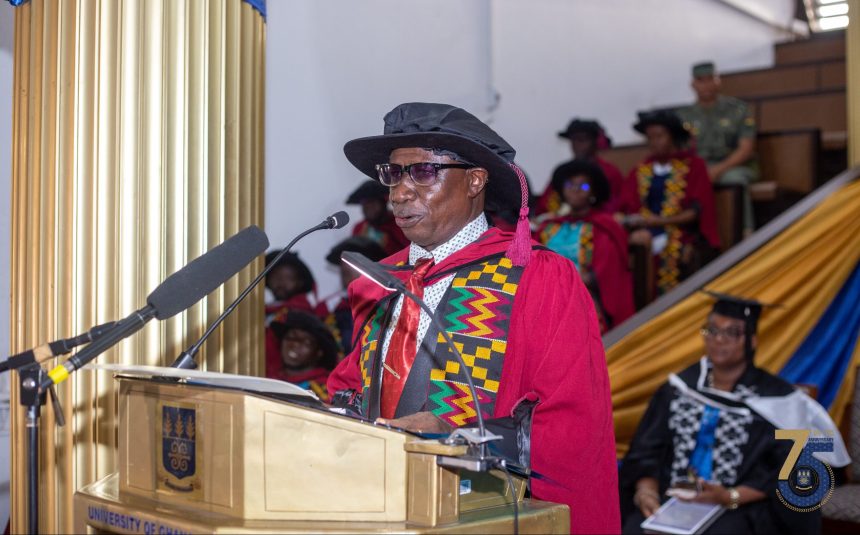Former Head of the Chemistry Department, Prof. Vincent Kodzo Nartey has bemoaned the unavailability of public health measures to ascertain the possible health impacts of metals in mining communities.
Prof. Vincent Kodzo Nartey delivered his inaugural lecture in the Great Hall of the University of Ghana on Wednesday, April 5, 2023, on the topic ” The Environmental Impact of Artisanal Gold Mining in Ghana: Unveiling the Silent Killer.
This lecture drew attention to the missing link (Mercury pollution associated with illegal gold mining) by exposing the many ways in which heavy metal exposure affects human lives, eventually leading to possible death and to the fact that most of our mining communities are polluted with heavy metals, especially mercury and this is based upon the extensive field studies done in some of these mining communities.
Prof. Nartey however urged health practitioners to mount a crusade to determine the effects of metal poisoning in mining areas in Ghana.
“Governments over the years have been putting in measures to coil the activities of illegal mining- with regards to the destruction of farms and farmlands. But the same cannot be said of steps directed towards assessment of heavy metal pollution and steps taken to address them giving this as a position. One can see clearly that the mining communities are exposed to grave danger from heavy metal contamination, especially Mercury. …In the local scene, no Public Health Resource measures are available to ascertain the possible health impact related to metal contamination, especially mercury in mining communities. It can also not be said with certainty that the health of people living in many communities is not impacted by Mercury pollution, the call therefore, goes to our Public Health institutions to mount a crusade to determine the health status in relation to mercury, poisoning, and other effects on the well-being of our residents in our mining community.”
He cited some recommendations the government can adopt to curb illegal mining and its effects. He called for the acceleration of cleaner technology in gold mining and refinery and also start a health surveillance program to screen citizens in mining communities.
“The team calls on the government to enforce tighter control, over the sale and usage of mercury and tighter control over activities of illegal. It should be implemented and sustained. There should be accelerated adoption of cleaner Technologies in Gold Mining and Refineries. The government is advised to start a health surveillance program to screen citizens from Mercury at Puglia, starting from the mining communities.”
He also called for the establishment of a center for heavy metal and toxicity research that would focus on studying the effects of heavy metals on living organisms, including humans, and developing strategies to mitigate the harmful impacts of heavy metal exposure.
“A Center for heavy metal and toxicity research should be established by official act by official acts directed toward the assessment of heavy metals. ..Various statutory bodies like EPA, Minerals commission, Etc, should be equipped to monitor, assess and control the activities of illegal mines.”
Meanwhile the Vice-Chancellor of the University of Ghana, Prof. Nana Aba Appiah Amfo tasked Prof . Vincent K. Nartey to continue the advocacy till there are improvements in the Minning sector.
“Prof. I think that a lecture or two is not going to take away the difficulties that we have in our communities with regard to Illegal small-scale mining. It calls for a sustained effort on the part of all of us. So probably you should not think that your work is done. You need to continue to work with your colleagues and your collaborators together with others in the private and public space, and I’m sure that the advocacy is sustained, so we get ourselves out of the situation.”
The illegal gold mining sector, referred to as “galamsey” has evolved from the artisanal stage through the use of rudimentary equipment such as; shovels, pick axes, and sluice boards to currently semi-mechanized operations involving the use of equipment such as excavators, bulldozers, and washing plants.
The techniques involved in each method have their levels of associated effects which can be considered under socioeconomic, Environmental, and Health impacts since these effects usually impact human lives, soils, water, and air. Loss of human lives is one critical concern as far as gold mining is concerned.
With soil, the main issues are the destruction of farms and farmlands. Forest reserves are also currently under threat, as miners especially illegal miners venture into such areas without any authorization. Cash crop farms especially cocoa farms are being destroyed by these gold seekers.
Rivers and streams in the mining communities are being heavily polluted with mine wastes, depriving the indigenes of safe drinking water. Urban populations are equally threatened as it is becoming increasingly difficult for the Ghana Water Company to adequately treat such polluted water at a reasonable cost for consumption.
Air quality is affected in many mining communities where rock grinding and the use of explosives are rampant.
Several lives have been lost as a result of miners’ inability to use modern and safe techniques in mining. Pits usually give in leading to the death of several miners. It is a known fact that heavy metals bio-accumulate in body tissues thereby disrupting the functions of vital organs and glands such as the heart, brain, kidneys, bone, liver, etc. They displace the vital nutritional minerals from their original place, thereby, hindering their biological functions.
They may enter the human body through food, water, air, or absorption through the skin when they come in contact with humans in agriculture, manufacturing, pharmaceutical, industrial or residential settings.
Mercury, the main extractant used in small-scale gold mining is usually abused most. The danger is, the metal speciates through many transformation processes in the environment and these are controlled by various physical, chemical, and biological factors. Depending on the prevailing environmental conditions, inorganic mercury species may be converted to the many times more toxic methylated form, such as methylmercury, a potent neurotoxin that is readily accumulated by aquatic biota.
The Inaugural lecture delivered by Prof. Vincent Kodzo Nartey sought to bring attention to illegal mining and called for governments and the general public to treat the issue with the seriousness it deserves.
Vincent Kodzo Nartey is a Professor of Chemistry at the Department of Chemistry, at the University of Ghana with a special interest in Physical, Analytical, and Environmental Chemistry. Professor Nartey served as the Head of the Department of Chemistry, University of Ghana for two terms, covering the periods, 2004 to 2006 and 2008 to 2011.
His inaugural lecture was the second inaugural lecture for the 2022/2023 academic year.
We celebrate you, Prof. Vincent K. Nartey, on attaining the rank of full professorship.#UGIS75 #IntegriProcedamus pic.twitter.com/lDRcr7H2cG
— University of Ghana (@UnivofGh) April 5, 2023
Story by | Gideon Nicholas Day | univers.ug.edu.gh

